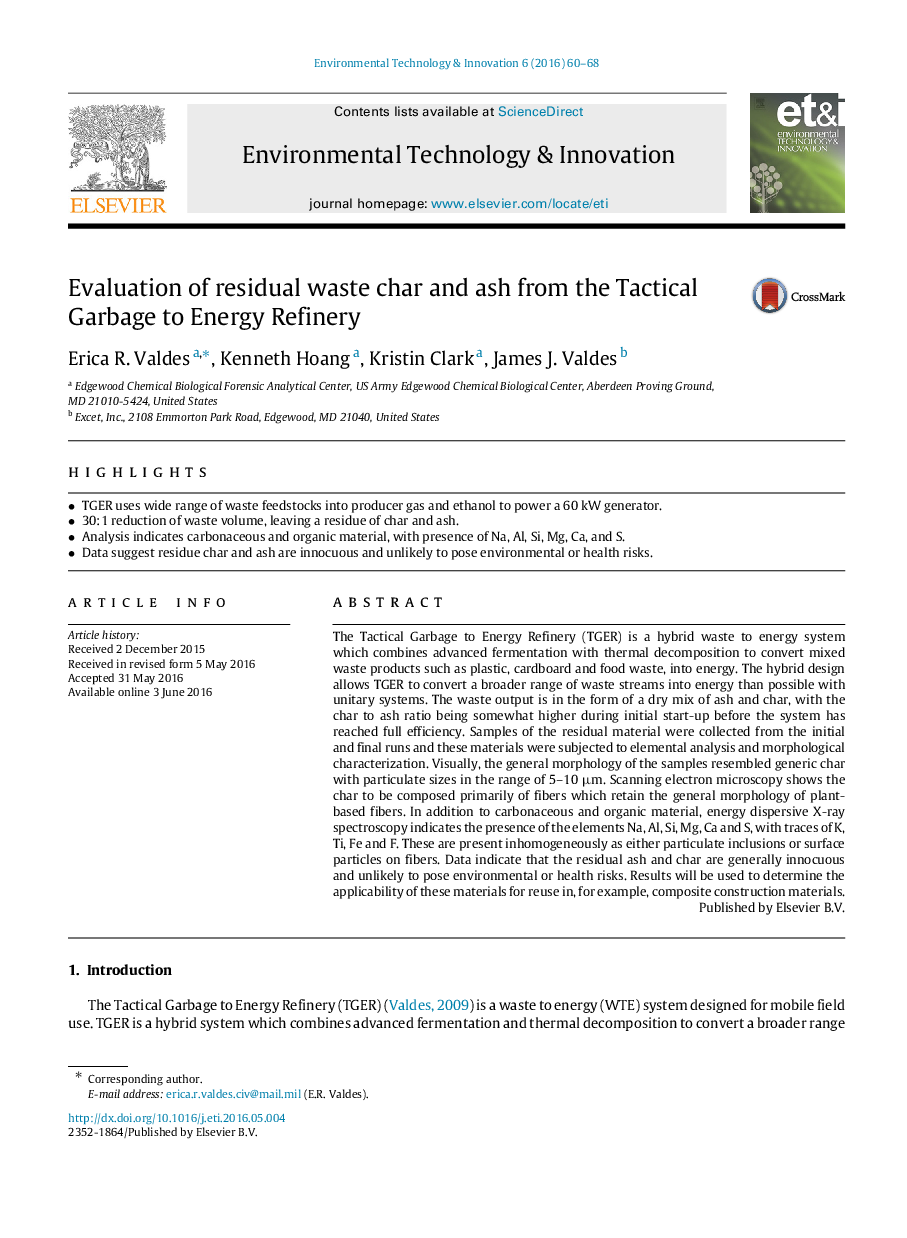| Article ID | Journal | Published Year | Pages | File Type |
|---|---|---|---|---|
| 4428161 | Environmental Technology & Innovation | 2016 | 9 Pages |
•TGER uses wide range of waste feedstocks into producer gas and ethanol to power a 60 kW generator.•30:1 reduction of waste volume, leaving a residue of char and ash.•Analysis indicates carbonaceous and organic material, with presence of Na, Al, Si, Mg, Ca, and S.•Data suggest residue char and ash are innocuous and unlikely to pose environmental or health risks.
The Tactical Garbage to Energy Refinery (TGER) is a hybrid waste to energy system which combines advanced fermentation with thermal decomposition to convert mixed waste products such as plastic, cardboard and food waste, into energy. The hybrid design allows TGER to convert a broader range of waste streams into energy than possible with unitary systems. The waste output is in the form of a dry mix of ash and char, with the char to ash ratio being somewhat higher during initial start-up before the system has reached full efficiency. Samples of the residual material were collected from the initial and final runs and these materials were subjected to elemental analysis and morphological characterization. Visually, the general morphology of the samples resembled generic char with particulate sizes in the range of 5–10 μm. Scanning electron microscopy shows the char to be composed primarily of fibers which retain the general morphology of plant-based fibers. In addition to carbonaceous and organic material, energy dispersive X-ray spectroscopy indicates the presence of the elements Na, Al, Si, Mg, Ca and S, with traces of K, Ti, Fe and F. These are present inhomogeneously as either particulate inclusions or surface particles on fibers. Data indicate that the residual ash and char are generally innocuous and unlikely to pose environmental or health risks. Results will be used to determine the applicability of these materials for reuse in, for example, composite construction materials.
